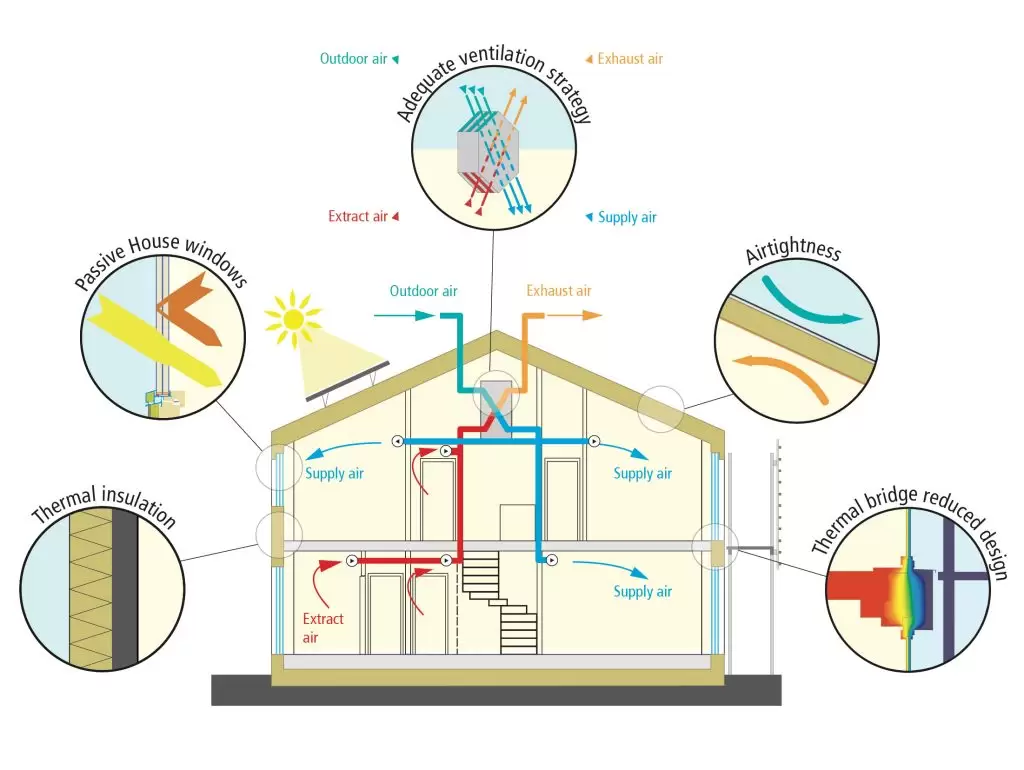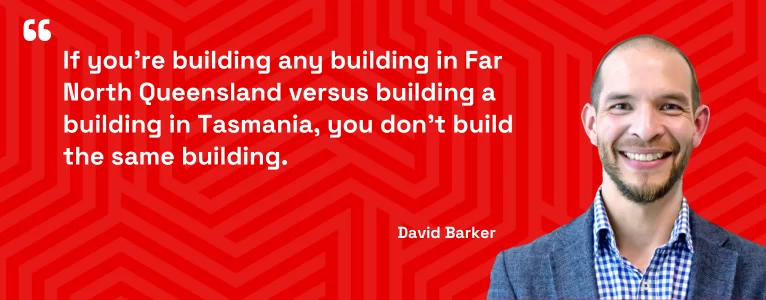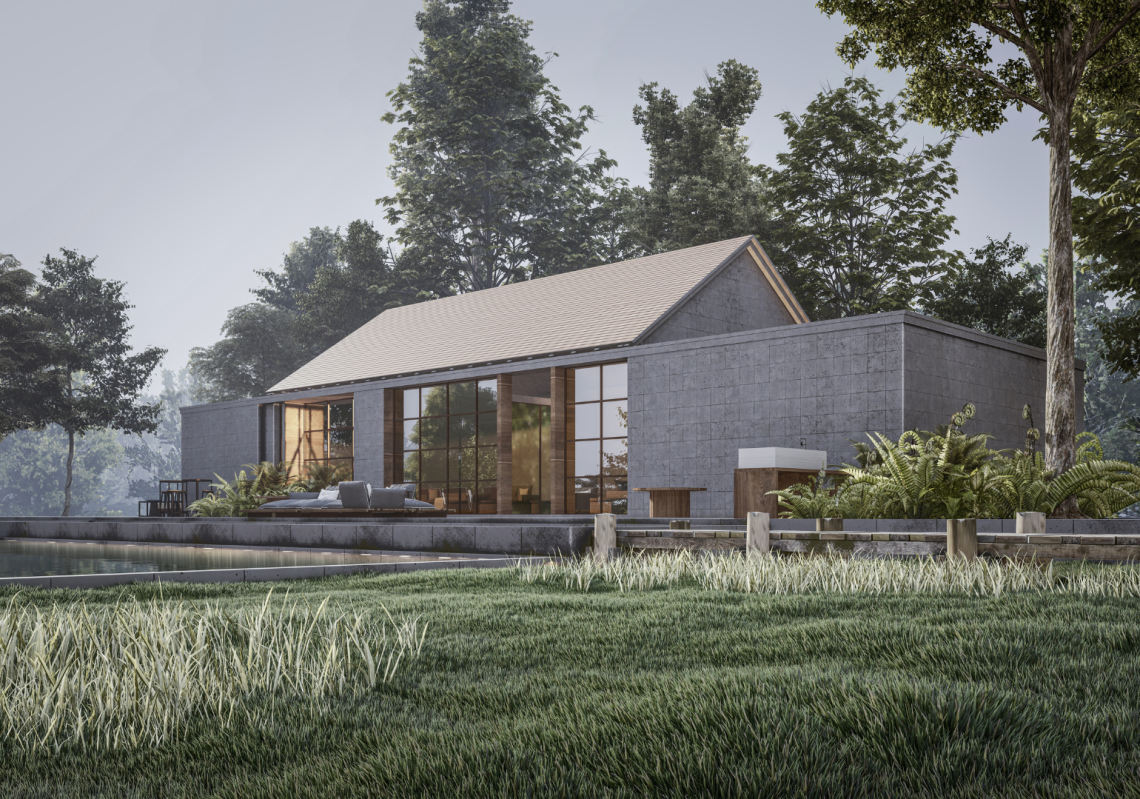The Passivhaus concept is an approach to designing sustainable structures by using engineering to work with, not against, the natural environment.
The Canadian city of Regina was built on treeless prairie at a latitude of 50 degrees north.
Temperatures in January fall to an average of minus 20°C, but summer brings its own challenges: the highest July temperature recorded in the city is 43.9°C.
It is a harsh environment for human habitation at the best of times, but during the 1970s oil crisis that saw energy prices skyrocket around the world, Canadian mechanical engineer Harold Orr sought to develop building techniques that could work with the environment to minimise the cost of heating and cooling.
Orr led the construction of what would become the Saskatchewan Conservation House: a Regina home that was designed to be extraordinarily airtight, with highly efficient insulation and controlled airflow.
Compared to the average 1970s home, the building used 85 per cent less energy.
As oil prices returned to normal, Orr’s approaches began to fall out of favour, but the idea of super-efficient building techniques didn’t disappear. Sweden and Denmark imposed low-energy building standards in the 1980s, and in 1988, Swedish engineer Bo Adamson and German physicist Wolfgang Feist launched a concept they called Passivhaus.
They defined this as a building with an extremely low energy demand, and so would require no active heating.
By 1990, they had constructed a pilot Passivhaus in Darmstadt, Germany, and Feist went on to found the Passive House Institute in 1996.
Today, more than 120,000 buildings around the world are certified as meeting the exacting Passivhaus standards. Just 25 of these, however, are in Australia.
“Leaky” buildings
“We’re quite used to designing and building leaky buildings in Australia,” mechanical engineer David Barker told create.
“In summer, a lot of hot air makes its way through cracks and into the inside of a building, and in winter, the opposite happens.”

Barker is Managing Principal and Head of Sustainability at Introba Australia, an engineering and consulting firm that helped develop The Passivhaus Playbook, which provides guidance on expanding the number of buildings that meet Passivhaus standards in Australia.
The strength of the Passivhaus concept, Barker explained, is that it requires engineers and architects to meet a series of benchmarks rather than merely seeking to implement a few sustainable design principles.
“The Passivhaus standard is a little different to other high performance or sustainable building standards in that it is very much a performance standard,” he said.
For instance, the envelope of the building is required to be extremely airtight, preventing unwanted heat from leaking out or seeping in.

“And that needs to be tested in practice when you’re building the building,” Barker said. “It is a difficult standard to achieve because it is so ambitious, and because it’s got those controls in place that mean, if you want to demonstrate to the market or to your audience that you’ve got a Passivhaus, you need to really achieve those targets and thresholds.”
One of the technologies that facilitates this process is named mechanical ventilation heat recovery, and it permits a Passivhaus building to bring in fresh air without disrupting the temperature balance.
Passivhaus advocates are clear that the system doesn’t require windows to always be shut tight; it’s just possible to properly ventilate a space without having them open.
“The heat recovery is important,” Barker said. “That keeps the energy demand low, because what we can do on a cold day is heat up that incoming fresh air using the heat that’s within our building, so it’s not super cold.”
Simpler, healthier
Better insulation and less air leakage mean lower energy bills but there are also health benefits, Barker said.
“For a family, for example, that might be living in a Passivhaus, you see over and over reports of much better indoor air quality, and removal of issues like mould and damp in buildings,” he said. “Those have tremendously costly impacts on family health.”
But broader take-up of Passivhaus approaches could also see wider community and economic benefits.

“For a developer that might decide to use a Passivhaus approach, there is potential there to reduce the capacity of the building services equipment that they’re installing into that building,” Barker said.
“We’ve had some conversations on projects about potentially removing entirely the need for a central heating system in a building of scale by being able to design the building fabric in such a way that it’s very high performing.
“That provides an upfront cost-saving potential for the developer.”
A subtropical approach
While the Passivhaus concept was developed in the chillier parts of the Northern Hemisphere, Barker said that its principles are applicable to any climate, including Australia’s.
“There have been some studies by some folks in Australia, looking at subtropical locations in Australia – further up north – and what a Passivhaus looks like there,” he explained. “It’s still possible and the fundamentals remain the same and the outcomes remain the same in terms of wellbeing and affordability.”
That should not be seen as unusual, Barker said.
“If you’re building any building in Far North Queensland versus building a building in Tasmania, you don’t build the same building,” he explained.
The challenge, then, is to help expand the purview of the Passivhaus standard in Australia beyond the domain of enthusiasts overseeing the construction of single-family dwellings.
“In that space, it can be [20 to 30 per cent] more expensive than building a traditional home in Australia,” Barker said.
That’s where he hopes The Passivhaus Playbook can make a difference. A resource created by Introba with Development Victoria and the Australian Passivhaus Association, the playbook is designed to facilitate greater embrace of the standard across the industry.
This integrated and holistic approach could also drastically reduce the cost, Barker said.
“The idea with The Passivhaus Playbook was to investigate what it would take to deliver a Passivehaus at scale that was cost effective and technically feasible,” he said.
“It’s still very much about the technical capabilities and skills that are required to deliver a Passivhaus, but what we found was that it was really important to get right up front of any process where there may be an investor or a developer thinking about the business case or the feasibility of any given project.”
Often, Barker explained, developers would try to implement Passivhaus principles too late in a project, rather than integrating them holistically from the start.
“The costs of changing your ambition halfway through the piece are much higher than setting your ambition there and getting the right team around you right from the start,” he said.




Good article Jonathan. As a mechanical engineer and owner-designer of my own Passivhaus in Western Australia, I am deeply invested and supportive of the design principles and performance standards it includes. Yes, the initial capital cost may be slightly higher than your “minimum code” house. However, once you start considering the impacts of climate change (more extreme weather events), the total cost of ownership and energy security (it’s easier to go off grid) then the case for building to this standard becomes very compelling.
Although an advocate for the design and construction of highly efficient homes, the claim that a Passihaus is merely 20-30% more expensive than building a ‘traditional house, I would love to see the data behind this.
Like many Australians past and present, I am currently building my own home in Melbourne. As a nation whose houses have been described as ‘glorified tents’, increasing the standard house efficiency so dramatically from the deplorable Standard of 6-Stars to Passihaus is no mean feat. Having pursued the most efficient house we can, I can confirm my anecdotal evidence is that a passihaus of comparable size to the current standard build would be closer to 100% more expensive.
Although, there are many simple ‘free’ things one can do in terms of improving a building’s performance starting with orientation. yourhome website is a great place to start.
That data is actually quite high, I suggest you look at the data coming out of the Passivhaus Trusts in the UK, where some projects are being delivered for 3.5% more than standard construction.
Thanks for your relpy. I do not deny the jncreased building costs will be different in different countries, but we are not in UK. The minimum build standard in the UK is leagues apart from the minimum in Australia. For example, double glazed windows for instance has been legally mandated for years. Adding thermally broken double glazing to an Australian build will likely add tens of thousands of dollars.
Congratulations on this article. I can agree that Canadian and other bitterly cold winters lead themselves to this type of airtight home construction, where the homes are shut up for much of the year, but I find it difficult to see that the additional cost of double-glazing and leak-proofing can be justified in much of sub-tropical and tropical Australia, particularly during the current housing shortage and extreme housing unaffordability.
Lightweight construction with good insulation and eaves, good orientation (where possible) for summer and winter, large relatively cheap retractable shades for shaded outdoor eating and good flow-through ventilation (extensive louvres and ceiling fans) makes for a very comfortable and more affordable home for most of the year in the tropics and sub-tropics. Air conditioning is now mandatory (even though it once was not) for the very hot humid summers. Costly double glaxing loses its advantages if the windows and doors are open much of the year.
I have seen and experienced passive cooling (not sealed to this level you call for) in-built in new builds across SE QLD and am yet to see one that actually works. The comfort-killer seems to mainly be the high humidity, and this is made significantly more comfortable by using the available breezes and additional artificial air movement (fans). Solar PV (if one can afford the capital cost) reduces the operational costs of the summer air-conditioning to a tolerable level.
I am not convinced the is a good design for much of tropical and sub-tropical Australia, due to the elevated capital cost and reduction or loss of natural cross-ventilation, but it may be there is a happy medium there somewhere.
I tend to agree with much of your statements, particularly that the design depends on location. I converted our 1976 4×2 double-brick & tile house in Perth hills with numerous simple solar-passive features and now find that for more than half the year, our house needs no heating or cooling, and our total electricity use (all-electric household with solar hot water/electric resistance backup) averages 10kWh/day over a typical year. The house is north facing and features variable shading (shade sails), single pane windows with heavy-backed curtains, free-flow ventilation via doors/windows in the east-west direction (three pathways) and north-south (single pathway), evaporative cooler to all rooms, reverse-cycle heat pump used mainly on some winter nights just in the central living space. In Summer we open all windows and doors in the night to get the easterly cooling winds, then close up windows and curtains against the sun until about midday, then on very hot days we open the windows and use the evap cooler for a few hours in the afternoon until the westerly sea breezes come in from the coast about mid-late afternoon. In Winter the daytime sun heats the front rooms/floors and at night we close the windows and curtains to trap heat until about 8pm, and if necessary we use the reverse-cycle heating until bedtime, when all heating is turned off for the night. Noted Architect Garry Baverstock has a very useful publication from his research in the 1970’s which gives optimal solar-passive design configurations for buildings in locations all around Australia – “Low Energy Buildings in Australia”